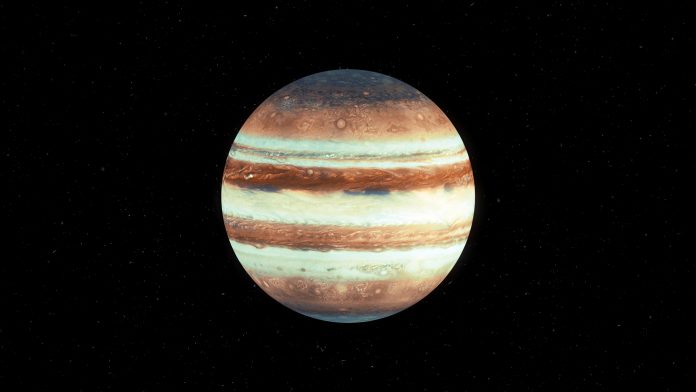In a groundbreaking discovery, NASA’s James Webb Space Telescope (JWST) has uncovered compelling evidence of carbon dioxide on Europa, one of Jupiter’s icy moons
This revelation marks a significant step towards assessing the potential habitability of Europa’s salty water oceans.
Unlocking carbon dioxide on Europa
While scientists have long known about the hidden water reservoirs beneath Europa’s icy exterior, questions persisted regarding their chemical composition and potential to support life.
The detection of carbon, a fundamental element for life within Europa’s subsurface ocean, underscores the JWST’s transformative capabilities.
Carbon’s crucial role for Europa’s ocean
Lead researcher Geronimo Villanueva of NASA’s Goddard Space Flight Center emphasised the importance of chemical diversity for life as we know it on Earth.
Central to terrestrial biology, carbon raises the possibility that Europa’s ocean may be hospitable to lifeforms. Villanueva noted, “This suggests that we may be able to learn some basic things about the ocean’s composition even before we drill through the ice to get the full picture.”
Intriguing origins
One fascinating aspect of this discovery is that meteorite impacts or external sources did not deliver the carbon molecules found on Europa.
This reinforces the hypothesis that the carbon observed on the moon’s surface originates from its internal ocean, a vital clue in understanding Europa’s potential as a habitat for life.
A geological perspective through JWST observations
The JWST’s observations revealed that the highest concentration of carbon dioxide is concentrated in a geologically youthful area known as Tara Regio.
This “chaos terrain” displays disrupted surface ice, suggesting a dynamic exchange between Europa’s surface and its subsurface ocean. The connection between ocean-derived salt and carbon dioxide further bolsters the belief that the carbon’s source lies within the moon’s internal ocean.
Plumes of mystery, even despite the discovery of carbon
While the JWST’s discovery of carbon on Europa is groundbreaking, it leaves a tantalising mystery unsolved. Previously, tentative detections of plumes erupting from the moon’s surface had piqued scientific interest. However, the JWST’s observations failed to confirm the existence of these plumes, leaving their presence still uncertain.
In conclusion, the James Webb Space Telescope’s revelation of carbon on Europa’s surface holds profound implications for our understanding of this icy moon’s potential to harbour life.
Europa remains a captivating celestial body worthy of further exploration and scrutiny as we continue to unlock the secrets of our solar system’s enigmatic neighbours.











